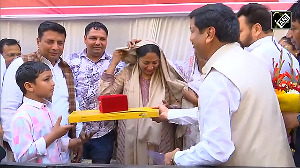While saving tax is important and certainly welcome, it’s lot more important to ensure each instrument actually does the job it was originally meant to, says Manish Shah.
 It’s that time of the year when the mad scramble to ensure you’ve put money aside in the relevant instruments to allow you to save tax, takes place. There’s Rs 150,000 in 80C, there’s Rs 15,000 allowance for health insurance and a few other means to save tax on hard earned money.
It’s that time of the year when the mad scramble to ensure you’ve put money aside in the relevant instruments to allow you to save tax, takes place. There’s Rs 150,000 in 80C, there’s Rs 15,000 allowance for health insurance and a few other means to save tax on hard earned money.
However, while saving tax is important and certainly welcome, it’s lot more important to ensure each instrument actually does the job it was originally meant to. Let’s look a little closer at life insurance. The basic premise is to compensate your family adequately on the unfortunate event of your premature death. The additional benefit is to double up as an instrument for long-term savings. Over the years, the second benefit has been given far more attention than the primary.
Let’s use our user data to illustrate this point. We looked at over 8,000 users of our Life Insurance tool and split them into 3 age groups – 21-30, 31-40 and 41 to 50.
We then looked at how their families would do financially, if they died on that day. The table below lists down the percentage of users whose families would have enough money (after selling off assets and cashing in on their current life insurance whilst paying off their loans) to survive without additional, outside support and broke them into 3 brackets:
1) Those that have less than 3 months (often due to large outstanding home loans)
2) Those that have enough to last between 3 and 12 months and lastly,
3) Those that have enough to last more than 12 months
|
Expense coverage Age group |
Less than 3 months |
Between 3 and 12 months |
More than a year |
|
21 to 30 |
35% |
9% |
56% |
|
31 to 40 |
29% |
5% |
66% |
|
41 to 50 |
20% |
4% |
76% |
While it’s nice to see a growing proportion of our users having increasing amounts of life insurance, we still have almost 1/3rdof our under 40 years of age users who’s families wouldn’t have enough to last more than 3 months.
Imagine having just 3 months of expense coverage! In a separate study, we saw a surprisingly large proportion of people having less life insurance than their outstanding home loan amounts - meaning, on their death, either a major portion of the spouse’s income would have to be diverted to paying EMIs or, the house would have to be sold to get rid of the outstanding mortgage.
While there are many instruments that allow you to save for long term goals – physical assets like real estate, gold and financial assets – like FDs, bonds, mutual funds, there’s no substitute for insurance against events like death.
This tax season, won’t it make sense, for once to save tax on insurance products whilst still getting what you’re paying for – actual ‘insurance’ for when you’re not there?
Manish Shah is a co-founder & CEO, BigDecisions.com







 © 2025
© 2025